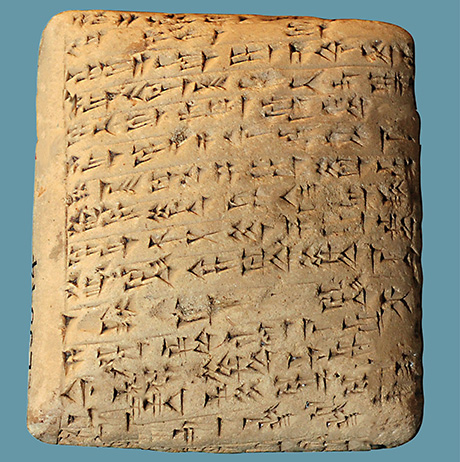Image Details

A.D. RIDDLE/BIBLEPLACES.COM
KINGLY CORRESPONDENCE. In the middle of the 14th century BCE, the language of diplomacy across the ancient Near East was Akkadian, a Mesopotamian language written by pressing wedge-shaped (or cuneiform) characters into clay. This was true even in Egypt, where the site of Tell el-Amarna has yielded a rich corpus of cuneiform tablets that preserves letters from the region’s most powerful kings as well as the rulers of smaller Canaanite city-states. As few kings could read or write Akkadian, however, the letters themselves were written by highly trained scribes who adapted their cuneiform training into a sophisticated scribal system that allowed their messages to be mutually understood. This particular tablet, EA 252, was written to the Egyptian court by a scribe on behalf of Labayu, king of Shechem, and records his consternation at being instructed not to repel attacks on his city.
